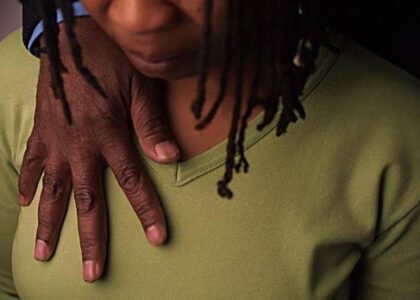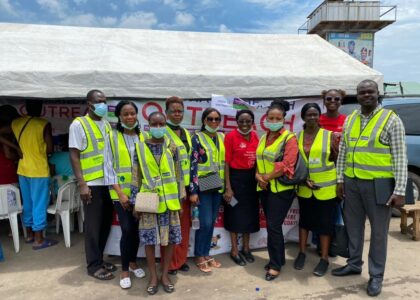[fusion_builder_container hundred_percent=”no” equal_height_columns=”no” menu_anchor=”” hide_on_mobile=”small-visibility,medium-visibility,large-visibility” class=”” id=”” background_color=”” background_image=”” background_position=”center center” background_repeat=”no-repeat” fade=”no” background_parallax=”none” enable_mobile=”no” parallax_speed=”0.3″ video_mp4=”” video_webm=”” video_ogv=”” video_url=”” video_aspect_ratio=”16:9″ video_loop=”yes” video_mute=”yes” video_preview_image=”” border_size=”” border_color=”” border_style=”solid” margin_top=”” margin_bottom=”” padding_top=”” padding_right=”” padding_bottom=”” padding_left=””][fusion_builder_row][fusion_builder_column type=”1_1″ layout=”1_1″ spacing=”” center_content=”no” hover_type=”none” link=”” min_height=”” hide_on_mobile=”small-visibility,medium-visibility,large-visibility” class=”” id=”” background_color=”” background_image=”” background_position=”left top” background_repeat=”no-repeat” border_size=”0″ border_color=”” border_style=”solid” border_position=”all” padding_top=”” padding_right=”” padding_bottom=”” padding_left=”” margin_top=”” margin_bottom=”” animation_type=”” animation_direction=”left” animation_speed=”0.3″ animation_offset=”” last=”no”][fusion_imageframe image_id=”14309″ style_type=”none” stylecolor=”” hover_type=”none” bordersize=”” bordercolor=”” borderradius=”” align=”none” lightbox=”no” gallery_id=”” lightbox_image=”” alt=”” link=”” linktarget=”_self” hide_on_mobile=”small-visibility,medium-visibility,large-visibility” class=”” id=”” animation_type=”” animation_direction=”left” animation_speed=”0.3″ animation_offset=””]https://www.ehainigeria.org/wp-content/uploads/2018/09/know-your-numbers-267×300.png[/fusion_imageframe][fusion_text]
Doctor: “Dan…….you have been diagnosed with Hypertension-stage1”
Dan: “This is strange…I have been quite healthy except for the pain I feel around the mid section of my body probably due to indigestion”
Doctor: “Healthy?…Do you know your numbers?”
Dan: “My Numbers?…You mean my age?…I’m only 29 years old …I am not old enough to be diagnosed with high blood pressure”
Doctor: Really…How old is “old enough”? Did you know that the proportion of strokes in younger adults is on the rise and many are due to high blood pressure? Since, you seem confused about what “Your Numbers” mean. I’ll like to take you through a quick counselling session on the importance of knowing your numbers”
I want you to think of your heart and blood vessels like the oil pump in your car where oil is pumped through rigid tubes. Pressure remains relatively constant throughout the pumping cycle unless the pump fails or there is an oil leak. The pump failure or oil leakage can cause oil pressure to fall or have adverse effects on the car’s system. Your heart and the blood vessels (arteries and veins) as a system to pump blood are similar except that the tubes have pliable walls, meaning that the space within the arteries can get bigger or smaller. If the space gets bigger, there is effectively less fluid, and pressure falls. If the space gets smaller, pressure goes up. Arteries have layers of muscles within their walls that can contract and make them narrow, making less space inside the arteries. Alternatively, the muscles can relax and dilate the artery, making more room. These muscles are under the control of the autonomic nervous system.
Blood pressure is the physical force exerted by the blood as it pushes against the walls of the arteries. Blood pressure is usually measured using a pressure cuff or an electronic device placed on your upper arm. Blood pressure readings are written in two numbers separated by a line. The top number represents the systolic blood pressure and the bottom number represents the diastolic pressure. The systolic blood pressure is the pressure in the arteries as the heart contracts pushing the blood forward. The diastolic pressure is the pressure in the arteries as the heart relaxes. The major categories of blood pressure include; High blood pressure known as hypertension, Low blood pressure known as hypotension and normal blood pressure. Guidelines from the American Heart Association (AHA) and the American College of Cardiology (ACC) published in November, 2017 consider blood pressure elevated between 120/80 and 129/80 as high.
It is important to note that an elevated blood pressure means that the heart must work harder to pump blood. This can damage the walls of the arteries and increase the risk of heart disease, kidney disease and stroke overtime. With regards to symptoms, many years of medical experience have proven that high blood pressure is a largely symptomless. It is a “silent killer”. If you ignore your blood pressure because you think a certain symptom or sign will alert you to the problem, you are taking a dangerous chance with your life.
Medical research has revealed that people with diabetes have a greater risk of hypertension than those without diabetes. Research based risk factors of this condition include;
Age: Your blood vessels become more rigid as you age, preventing them from opening as effectively as when you were younger, which increases peripheral resistance.
Genetics: Having family members with hypertension increases your likelihood of being diagnosed with the condition.
Race: High blood pressure is more common in people with dark skin than in people with pale skin.
The latter two factors downplay the age factor in young people who are diagnosed with the condition. The good news is you can reduce your risk through a healthy lifestyle. For a healthy lifestyle, you should:
Eat healthy
Your numbers reflect your diet. Reduce your salt intake, eat more fruits and vegetables, drink less alcohol and reduce fats and cholesterol in your diet.
Weigh Healthy
Being the right weight in proportion to your height lowers blood pressure because your heart doesn’t have to work so hard. Losing weight if you need to will help to reduce your blood pressure and heart strain.
Exercise Healthy
You need to be careful with the choice of exercises and activities. You should avoid sprinting or weightlifting. These kinds of activities will quickly raise your blood pressure, and put unwanted strain on your heart and blood vessels. Activities such as scuba diving or parachuting can be dangerous if your blood pressure is not under control.
Aerobic activities, repetitive and rhythmic body movements are recommended because they use the large muscle groups of your body, such as those in your legs, shoulders and arms. Walking, jogging, swimming, dancing and digging are all aerobic activities.
Think Healthy
In the face of competing needs and unmet life targets, many people tend to burden their minds and this can result in hypertension. It is recommended that people at the risk of hypertension take one day at a time so as to remain happy.
With these tips, you can take control of your blood pressure to a large extent to prevent high numbers.. However, you need to maintain a normal blood pressure (refer to graphic for numbers) and avoid a dangerously low blood pressure. Low blood pressure, also called hypotension, is blood pressure low enough that the flow of blood to the organs of the body is inadequate and symptoms of low blood flow develop. It is important to note that low pressure alone, without symptoms or signs, usually is not unhealthy. Symptoms of low blood pressure occur because one or more of the body’s organs is not getting enough blood supply. The symptoms of low blood pressure include light-headedness, dizziness, and fainting. Low blood pressure that causes an inadequate flow of blood to the body’s organs can cause strokes, heart attacks, and kidney failure. The most severe form is shock. Common causes of low blood pressure include a reduced volume of blood, heart disease, and adverse effects of medications. The cause of low blood pressure can be determined with blood tests, radiologic studies, and cardiac testing. Treatment of low blood pressure is determined by the cause of the low pressure.
Health checks are extremely important. Ensure you visit the hospital consistently for regular health checks and monitor your numbers. Research findings indicate that one in three people who have high or low blood pressures are not aware of their conditions. It is recommended that you read through research based literature on this counselling session and make conscious efforts to enlighten people.
Dan: Thank you so much for the information, I’ll do as instructed. Henceforth, I am an advocate for #KnowYourNumbers.
[/fusion_text][/fusion_builder_column][/fusion_builder_row][/fusion_builder_container][fusion_builder_container hundred_percent=”no” equal_height_columns=”no” menu_anchor=”” hide_on_mobile=”small-visibility,medium-visibility,large-visibility” class=”” id=”” background_color=”” background_image=”” background_position=”center center” background_repeat=”no-repeat” fade=”no” background_parallax=”none” enable_mobile=”no” parallax_speed=”0.3″ video_mp4=”” video_webm=”” video_ogv=”” video_url=”” video_aspect_ratio=”16:9″ video_loop=”yes” video_mute=”yes” video_preview_image=”” border_size=”” border_color=”” border_style=”solid” margin_top=”” margin_bottom=”” padding_top=”” padding_right=”” padding_bottom=”” padding_left=””][fusion_builder_row][fusion_builder_column type=”1_1″ layout=”1_1″ spacing=”” center_content=”no” hover_type=”none” link=”” min_height=”” hide_on_mobile=”small-visibility,medium-visibility,large-visibility” class=”” id=”” background_color=”” background_image=”” background_position=”left top” background_repeat=”no-repeat” border_size=”0″ border_color=”” border_style=”solid” border_position=”all” padding_top=”” padding_right=”” padding_bottom=”” padding_left=”” margin_top=”” margin_bottom=”” animation_type=”” animation_direction=”left” animation_speed=”0.3″ animation_offset=”” last=”no”][fusion_text]
This article was developed by Tobi Akerele drawing from the following references:
High Blood Pressure.https://www.onhealth.com/content/1/high_blood_pressure_hypertension Retrieved September 26, 2018 What is Low Blood Pressure https://www.emedicinehealth.com/low_blood_pressure/article_em.htm#what_is_low_blood_pressure Retrieved September 26, 2018
[/fusion_text][fusion_text columns=”” column_min_width=”” column_spacing=”” rule_style=”default” rule_size=”” rule_color=”” hide_on_mobile=”small-visibility,medium-visibility,large-visibility” class=”” id=””]
For more insightful contents from Oluwatobiloba Akerele, watch this space.
You can also follow her on social media:
Instagram: @oluwatobiloba_akerele
LinkedIn: @Oluwatobiloba Hannah Akerele
Join the conversation: drop your comments here and follow us on social media
Watch this space!
Featured Image: pinterest.com
[/fusion_text][/fusion_builder_column][/fusion_builder_row][/fusion_builder_container]







